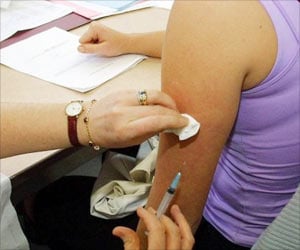Simplifying childhood obesity programs for parents with low health literacy can help them understand obesity better and prevent their children from developing further diseases.

‘About 14 million people become newly infected each year. HPV is so common that most sexually-active men and women will get at least one type of HPV at some point in their lives.’





Designing childhood obesity programs for families with limited health literacy is critical to their success, according to the University of Virginia School of Medicine researchers who led the study.Approximately 1 in 3 U.S. parents or caregivers have low health literacy, meaning they have limited ability to understand basic health information needed to make appropriate health decisions for themselves and their children.
"Parents with lower health literacy also have children with poorer health outcomes," said Jamie Zoellner, PhD, the study’s co-principal investigator and a researcher in UVA’s Department of Public Health Sciences. "However, few childhood obesity treatment programs incorporate design features and treatment strategies that meet the health literacy needs of parents."
Making Health Information Easier to Understand
The three-month program in the Dan River area focused on behavioral strategies aimed at improving healthy eating and physical activity. Instruction included six small-group family classes, six telephone support calls, 24 exercise sessions and six newsletters for children, along with parent and child workbooks.
Advertisement
"Regardless of health literacy status, everyone can benefit from simplified health information, reduced literacy demands of program components, reinforcement of key messages and practice activities that promote skill development and self-management," Zoellner said.
Advertisement
This approach led to similar positive outcomes for families with low and high health literacy levels. Along with improvements in body mass index, children and adults also reduced their consumption of sugar-sweetened drinks.
Children of all health literacy levels also saw improvements in quality of life, while adults saw improvements in physical activity levels as well as fruit and vegetable consumption.
The only exception was in the amount of screen time for children. While children from low health literacy families reported having more screen time both before and after the program, the gap in screen time between low health literacy and high health literacy families narrowed after families participated in the program.
A six-month version of the childhood obesity treatment program, called iChoose, is now being tested in the Dan River region.
Source-Eurekalert














